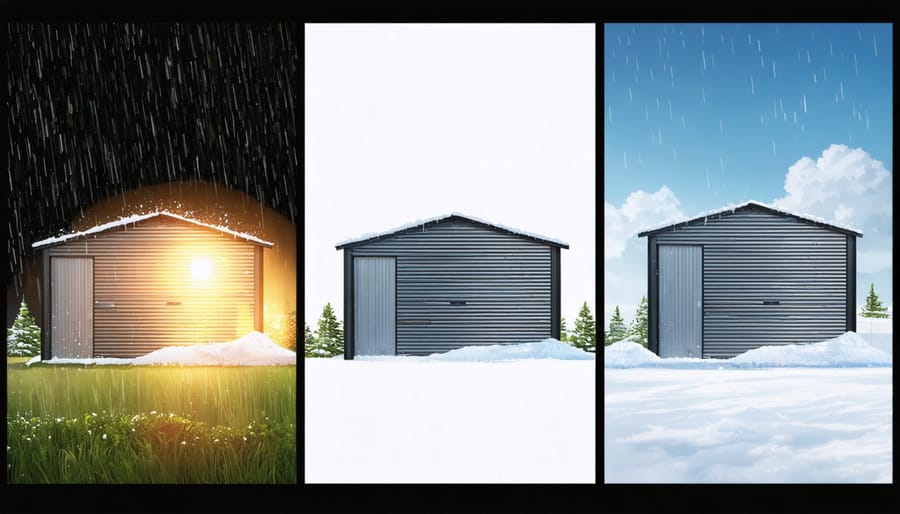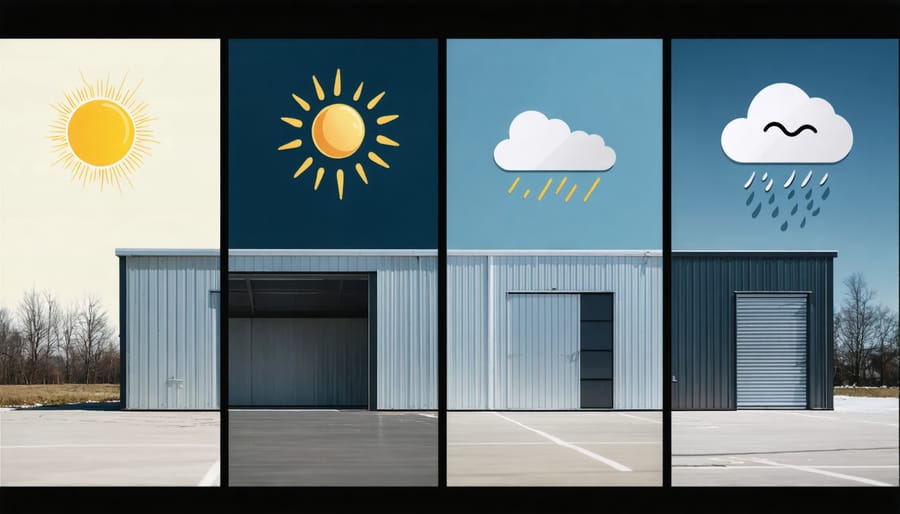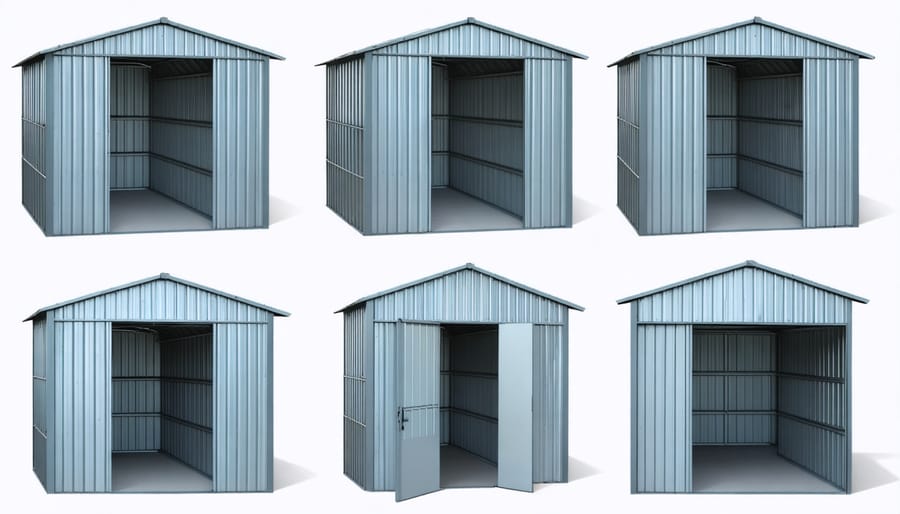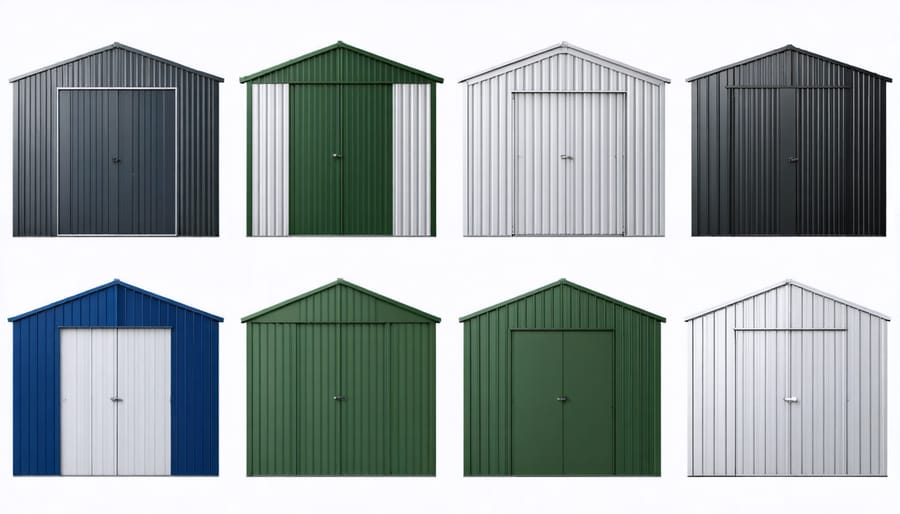Metal Sheds: 7 Surprising Reasons They’re Worth Every Penny

Metal sheds have revolutionized outdoor storage solutions, offering a compelling blend of durability and value that traditional wooden structures simply can’t match. Standing strong against harsh weather, resisting rust through advanced galvanized steel construction, and requiring minimal maintenance, these modern storage solutions have earned their place in today’s homes. Whether you’re protecting valuable equipment from the elements or maximizing your garage space, metal sheds deliver practical benefits that make them an increasingly popular choice among homeowners. From their fire-resistant properties to their surprisingly affordable price point, metal sheds address key concerns that matter most to property owners. Yet, like any significant investment, understanding their strengths and limitations is crucial before making your decision. In this comprehensive guide, we’ll explore why metal sheds might be the perfect storage solution for your needs, examining their durability, cost-effectiveness, and real-world performance in various climates and conditions.
The Durability Factor: How Metal Sheds Stand Up to Time
Weather Warriors: Protection Against Elements
Metal sheds excel at standing up to Mother Nature’s challenges, making them reliable guardians of your belongings year-round. Their galvanized steel construction naturally repels rainwater, preventing rust and moisture damage when properly sealed and maintained. During winter months, metal sheds handle snow loads effectively, thanks to their sloped roofs that encourage snow to slide off rather than accumulate.
When it comes to UV protection, metal sheds truly shine. Unlike wooden structures that can fade and deteriorate in strong sunlight, metal sheds maintain their appearance and structural integrity even after years of sun exposure. They also perform admirably in extreme temperatures, though you might notice slight expansion in intense heat and contraction in cold weather – a normal characteristic that manufacturers account for in their designs.
For enhanced weather protection, many modern metal sheds feature weather stripping around doors and reinforced corners. Adding proper ventilation and foundation drainage can further boost their weather-fighting capabilities, ensuring your stored items stay dry and protected regardless of outside conditions.

Pest and Rot Resistance
One of the strongest advantages of metal sheds is their excellent resistance to pests and rot. Unlike wooden structures, metal sheds naturally repel termites, carpenter ants, and other wood-boring insects that can cause significant structural damage. You won’t need to worry about mice or rats chewing through the walls either, as the metal construction provides a solid barrier against these persistent pests.
Metal sheds also excel in moisture resistance, eliminating the risk of rot, mold, and mildew that often plague wooden alternatives. This natural resistance means you won’t need to apply chemical treatments or preservatives to protect your shed, saving you time and money on maintenance. Even in humid climates or areas with frequent rainfall, a properly installed metal shed will maintain its structural integrity without deteriorating or developing fungal growth.
This pest and rot resistance makes metal sheds particularly suitable for storing sensitive items like gardening equipment, seasonal decorations, and outdoor furniture, ensuring your belongings stay protected year-round.
Cost vs. Value: The Financial Picture
When considering a metal shed, the initial cost often comes as a pleasant surprise for budget-conscious homeowners. Metal sheds typically range from $300 to $2,000, making them significantly more affordable than wooden alternatives that can easily exceed $3,000. This lower upfront investment doesn’t mean you’re compromising on quality, though.
The long-term financial benefits really shine through when you consider maintenance costs. Unlike wooden sheds that require regular painting, sealing, and potential wood replacement, metal sheds need minimal upkeep. A simple annual cleaning and occasional check for loose screws is usually all that’s required, saving you hundreds in maintenance costs over the years.
Insurance companies often offer lower rates for metal sheds due to their fire-resistant properties, which can lead to additional savings on your homeowner’s policy. While premium models with reinforced frames and weather-resistant coatings might cost more initially, they often prove more economical over time thanks to their durability and longevity.
Remember to factor in installation costs when budgeting. While DIY installation can save money, professional installation typically runs between $100-500, depending on your location and the shed’s size. Many homeowners find this expense worthwhile for ensuring proper assembly and structural integrity.
Consider the resale value too – a well-maintained metal shed can last 20+ years and may even increase your property value, making it a sound investment for the long term.
Installation and Maintenance Reality Check

DIY-Friendly Assembly
Most metal sheds come with detailed assembly instructions and pre-drilled parts, making them surprisingly DIY-friendly. Start with a proper foundation setup, ensuring your base is level and stable. Then, organize all components and tools before beginning assembly.
The typical installation process follows these steps:
1. Layout and assemble the floor frame
2. Install wall panels one by one
3. Connect corner pieces and door frame
4. Attach roof trusses and panels
5. Secure all fasteners and add weatherstripping
With basic tools and a helper, most homeowners can complete assembly in 4-8 hours. Keep all parts organized using the provided manual, and don’t fully tighten screws until all panels are in place. This allows for adjustments during assembly and ensures everything aligns properly. Remember to wear gloves, as metal edges can be sharp.
Keeping Your Metal Shed in Top Shape
Metal sheds require minimal maintenance compared to wooden structures, but a few simple steps can keep yours in prime condition for years. Start by regularly checking for loose screws or bolts, especially after strong winds, and tighten them as needed. Keep the gutters clear of leaves and debris to prevent water damage, and inspect the roof seals annually.
To prevent rust, address any scratches promptly with touch-up paint specifically designed for metal surfaces. Clean your shed at least twice a year using mild soap and water, paying special attention to corners where dirt can accumulate. Consider applying a rust inhibitor to vulnerable areas, particularly in coastal regions where salt air can accelerate corrosion.
If condensation becomes an issue, improve ventilation by installing vents or a solar-powered fan. Place a moisture-absorbing product inside during humid seasons, and ensure the shed’s foundation remains level to prevent structural stress.
Style and Customization Options
Metal sheds have come a long way in terms of style and customization, offering homeowners plenty of options to complement their outdoor spaces. Today’s metal sheds are available in a wide range of colors, from classic neutral tones like beige and gray to more striking options like forest green and barn red. Many manufacturers offer two-tone color schemes, allowing you to coordinate your shed with your home’s exterior.
Beyond colors, metal sheds come in various architectural styles. You can choose from traditional gable roof designs, modern flat-roof configurations, or barn-style structures with higher peaks. Some models feature decorative elements like faux windows, shutters, and trim pieces that add character and visual interest.
Customization doesn’t stop at aesthetics. Many metal sheds can be modified with additional features like built-in shelving, workbenches, or tool organizers. You can install pegboard walls for hanging tools, add extra windows for natural light, or incorporate ventilation systems for better airflow. Some manufacturers offer modular designs that allow you to expand your shed’s size later if needed.
For those who enjoy DIY projects, metal sheds are particularly accommodating. You can easily add custom door handles, rain gutters, or even solar-powered lighting. The smooth interior walls make it simple to mount storage solutions or add insulation if desired. Many homeowners also personalize their sheds with exterior landscaping, creating an attractive garden feature rather than just a storage space.

Common Concerns Addressed
Rust Prevention Strategies
Protecting your metal shed from rust is essential for its longevity and appearance. Start by applying a rust-resistant primer and paint designed specifically for metal surfaces. Regular maintenance, including annual inspections and touch-ups of any scratches or chips, can prevent rust from taking hold. Keep gutters clean and ensure proper drainage around your shed’s foundation to prevent water pooling.
Good ventilation is crucial – install vents or a dehumidifier to control moisture levels inside. When organizing your shed, use shelving units or pallets to keep items off the floor and allow air circulation. Consider applying a clear protective coating to the interior walls for extra protection. Just as preventing rust on tools is important, maintaining your shed’s metal surfaces requires similar attention.
For coastal areas or regions with high humidity, consider using sacrificial anodes or applying additional protective coatings. Regular cleaning with mild soap and water, followed by thorough drying, helps remove corrosive substances like salt air or industrial pollutants that can accelerate rust formation.
Temperature Management Solutions
While metal sheds can heat up during summer and get chilly in winter, there are several effective ways to control internal temperature effectively. Installing proper ventilation is key – add roof vents or turbine ventilators to release hot air and prevent condensation. Consider applying reflective roof coating or heat-resistant paint to deflect sunlight and reduce heat absorption.
Insulation makes a significant difference in both hot and cold weather. You can add foam board insulation to walls and ceiling, or install a thermal barrier beneath the roof. For quick cooling, portable fans or small AC units work well in summer, while space heaters can provide warmth during winter months.
Don’t overlook the importance of proper foundation and positioning. Placing your shed in a partially shaded area can naturally regulate temperature, while raising it slightly off the ground improves air circulation. Weather stripping around doors and windows helps maintain desired temperatures and prevents drafts. These solutions make metal sheds comfortable and functional year-round storage spaces.
Metal sheds have proven themselves to be excellent storage solutions for many homeowners, offering a compelling mix of durability, low maintenance, and value for money. With their resistance to rust, pests, and severe weather conditions, these structures can protect your belongings for many years while requiring minimal upkeep. The affordability factor, combined with quick assembly options and modern designs, makes them particularly attractive for those seeking practical storage solutions.
While metal sheds do have some considerations to keep in mind, such as proper foundation preparation and potential condensation management, these challenges are easily addressed with proper planning and basic maintenance routines. The benefits of choosing a metal shed – including fire resistance, sustainability, and long-term cost-effectiveness – typically outweigh any minor drawbacks.
For homeowners seeking a reliable, long-lasting storage solution, a metal shed represents a smart investment. By carefully considering your specific needs, available space, and local climate conditions, you can select a metal shed that will serve your storage needs efficiently for years to come. Remember to focus on quality construction, proper installation, and regular maintenance to maximize your shed’s performance and longevity.

